According to the survey, the destination of waste and by-products is not only collective kitchens but also restaurants and supermarkets in the city center.
Waste products everywhere
Preliminary statistics from the General Department of Customs show that in the first four months of 2023, the cumulative import value of meat, meat by-products and edible by-products after animal slaughter reached 407.5 million USD, up 1% over the same period in 2022.
Headless chicken, chicken bladder, tough chicken... are different names in some supermarkets for imported discarded chicken products. A whole chicken weighs an average of 1.5 kg but costs less than 60,000 VND; individual parts such as: breast, thigh, wings, legs, gizzard, young eggs, heart, liver... are much cheaper, only 30,000 - 40,000 VND/kg depending on the type, which is a great attraction for many housewives in the current economic context.
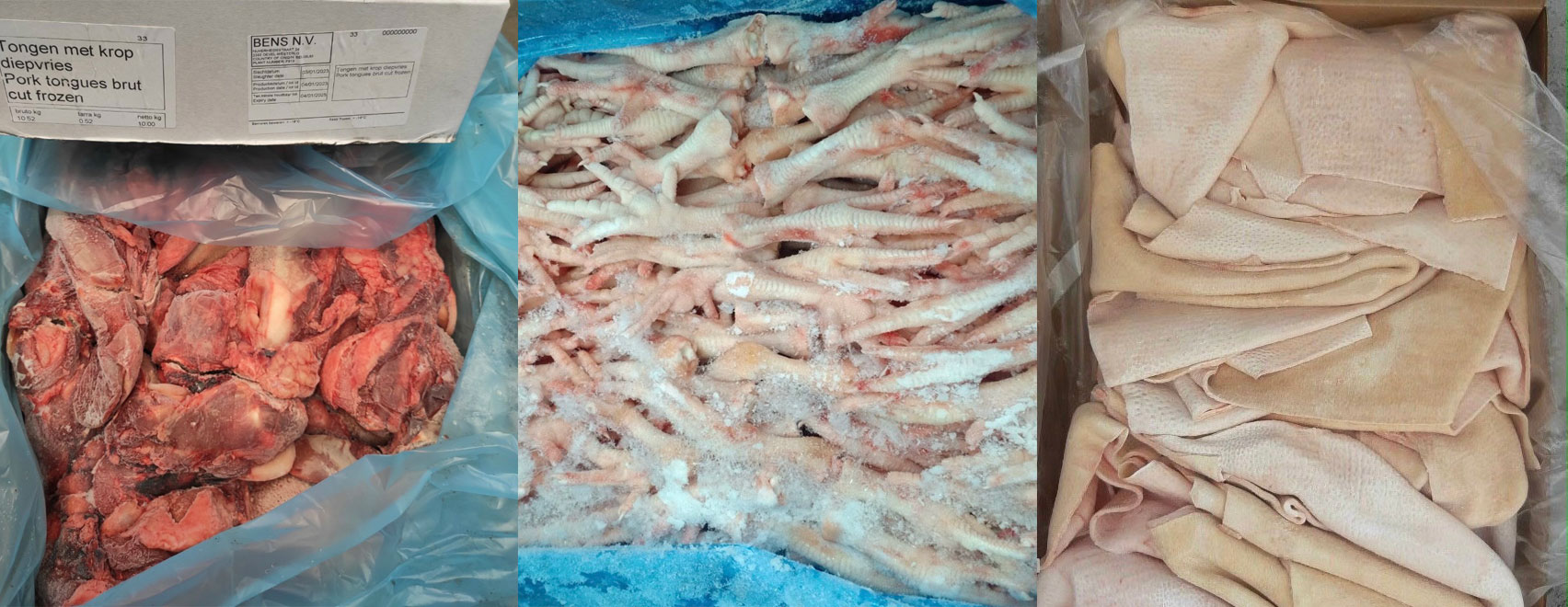
Image sent by Mr. K. to introduce hot-selling imported products
To boost consumption, supermarkets also process them into ready-to-eat products such as roast chicken, steamed chicken with onions at prices of about 75,000 - 80,000 VND/chicken; a thigh costs only an average of 22,000 - 25,000 VND... Ms. Tran Thu Hue (living in Thu Duc City, Ho Chi Minh City) said: "Every time I go to the supermarket, passing by the processed food area, I smell the extremely attractive fried and grilled products at super cheap prices. Out of curiosity, I tried these products a few times, but I'm sorry to say that it's indescribable, all that remains is spices."
At traditional markets, these products are much cheaper, only 40,000 VND/chicken; pork leg, chicken wings, chicken feet... from 40,000 - 45,000 VND/kg. Besides fresh products, processed products are dried chicken with lemon leaves, dried pork, shredded pork, sausage... with common prices from only 85,000 - 110,000 VND/kg.
Many small traders said that their regular customers are popular eateries, sticky rice shops, and bread shops. In particular, meat by-products of the slaughtering process such as chicken intestines, chicken skin, pig skin, immature eggs, chicken heels, pig intestines, cow intestines, hearts, livers, tongues, chicken bones, pork bones of all kinds, etc. are also imported to Vietnam in large quantities.
The above products are sold in popular restaurants and bars and turned into countless attractive dishes. A survey in an alley on Cach Mang Thang Tam Street (District 10, Ho Chi Minh City) showed that every afternoon, dozens of people line up to buy grilled chicken feet. It is estimated that this establishment consumes hundreds of kilograms of chicken feet every day. Each pair of finished chicken feet has a common price of 10,000 VND, so anyone can eat a few pairs. Most people still enjoy them without caring about their origin or real quality because when put in their mouths, all of these products are covered with many layers of delicious, rich spices.
Why do traders abandon main products and switch to by-products?
While hot meat is commonly priced from 135,000 - 150,000 VND/kg, imported frozen goods are only 75,000 - 80,000 VND/kg. With such competitive prices, these products are now very popular in the market and are widely available from supermarkets to traditional markets and online markets.
In the role of someone who needs to buy cheap meat to open a popular restaurant, we contacted Mr. TVK, a famous frozen meat importer in Ho Chi Minh City, and were told: We have all the products we need, many items from many different countries. European goods are mainly from Germany, Belgium, the Netherlands, and there are also many products from the US, Brazil, and Australia.
"Meat products are not delicious now because of fierce competition and slow delivery. In recent years, the economy has been more difficult, so I mainly import by-products such as pork bones, chicken skin, pork skin, chicken feet, pig feet, fat, intestines... but I make more profit. On average, these products imported to Vietnam, including all taxes and fees, cost only about 1 USD/kg. I only sell wholesale, not retail. When the goods arrive at the port, I open a warehouse and deliver them to customers without having to spend extra on space, warehouse, and labor," said Mr. K. and advised: "If you open a popular restaurant, you should focus on dishes made from chicken feet, chicken wings, pig intestines, beef intestines, ham hocks, and pork belly. Specifically, large chicken feet of 20-22 pairs/kg imported to Vietnam cost only about 20,000 VND/kg. Currently, this company sells to restaurants for 40,000 - 50,000 VND/kg depending on customers and quantity."
"Shops buy them and process them in all kinds of ways to sell at a reasonable price of 10,000 VND/pair. It turns out that the shops earn 220,000 - 240,000 VND/kg for a kilo of chicken feet, after deducting all expenses, they still make a profit of at least 150,000 VND/kg. Other by-products such as chicken gizzards, chicken intestines, young eggs that can be fried with garlic, stir-fried with squash... are simple dishes that customers really like; the same goes for pork intestines and beef intestines. You can braise them in coconut water, make stew, cook porridge, or make hot pot. As for things like pork skin, people mainly use it to make broken rice and crispy pork skin is very popular in Chinese dishes," Mr. K. advised.
Need to protect consumer health
According to the Vietnam Poultry Association (VIPA), in 2022, the amount of live chickens imported into Vietnam for slaughter was 6,603 tons of meat, an increase of 100.8% and the amount of slaughtered poultry meat imported into Vietnam was 24,662.1 tons, an increase of 9.6% compared to 2021. Of this, 41.5% were imported from the US, 22% from Brazil, 18% from Korea, 11.6% from Poland...
It is time to have non-tariff measures to protect domestic production, avoiding the situation of importing poultry products in deficit as in the past. It is recommended that ministries and branches soon build technical barriers in a reasonable manner and in accordance with international practices.
Mr. Nguyen Thanh Son, Chairman of Vietnam Poultry Association
Chairman of the Vietnam Poultry Association (VIPA) Nguyen Thanh Son stated that in the past 5 years, the annual output of imported poultry meat has increased continuously (over 15%/year), accounting for 20-25% of the total domestic chicken meat consumption. In addition to officially imported chicken products, a large volume of discarded live chickens estimated at 200,000-250,000 tons/year is imported illegally and smuggled across the border. Not to mention that there are many products used as animal feed such as feet, heads, necks, wings, gizzards of livestock and poultry, even livestock products using banned substances... but are still smuggled into the Vietnamese market as food for humans. If this situation is not controlled, domestic production will be extremely unstable.
Sharing the same view, Mr. Nguyen Van Ngoc, Vice President of the Livestock Association of Dong Nai Province - the livestock capital of the country, expressed his frustration: Protecting the domestic livestock industry is only a small part of the problem in the overall picture. Let's ask, when those poor quality waste products enter our people's bodies, how will they affect the health of domestic consumers? And then, from the people to the government, how much will we spend on treating diseases caused by that poor quality food source. It is time to have standard and technical barriers for imported meat and meat products.
Source link


![[Photo] 12th grade students say goodbye at the closing ceremony, preparing to embark on a new journey](https://vphoto.vietnam.vn/thumb/1200x675/vietnam/resource/IMAGE/2025/5/28/42ac3d300d214e7b8db4a03feeed3f6a)

![[Photo] Prime Minister Pham Minh Chinh receives a bipartisan delegation of US House of Representatives](https://vphoto.vietnam.vn/thumb/1200x675/vietnam/resource/IMAGE/2025/5/28/468e61546b664d3f98dc75f6a3c2c880)
![[Photo] Vietnamese and Hungarian leaders attend the opening of the exhibition by photographer Bozoky Dezso](https://vphoto.vietnam.vn/thumb/1200x675/vietnam/resource/IMAGE/2025/5/28/b478be84f13042aebc74e077c4756e4b)








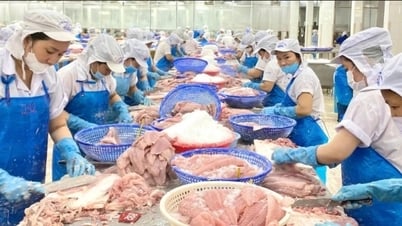

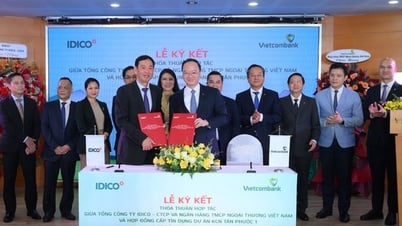









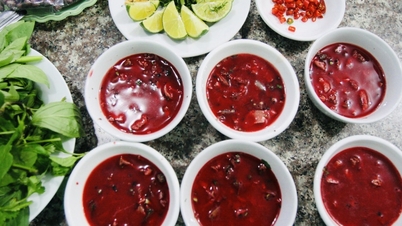
![[Photo] General Secretary To Lam works with the Central Policy and Strategy Committee](https://vphoto.vietnam.vn/thumb/1200x675/vietnam/resource/IMAGE/2025/5/28/7b31a656d8a148d4b7e7ca66463a6894)


















































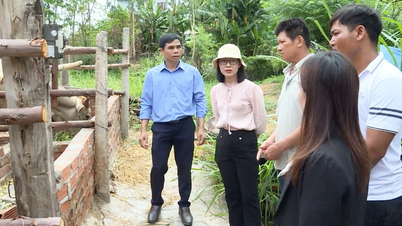

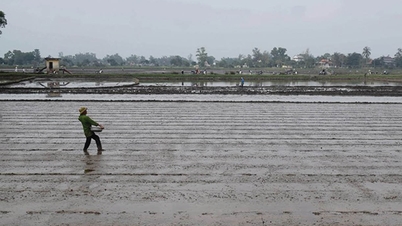

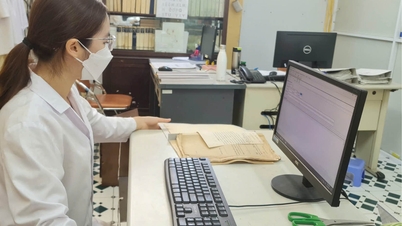











Comment (0)